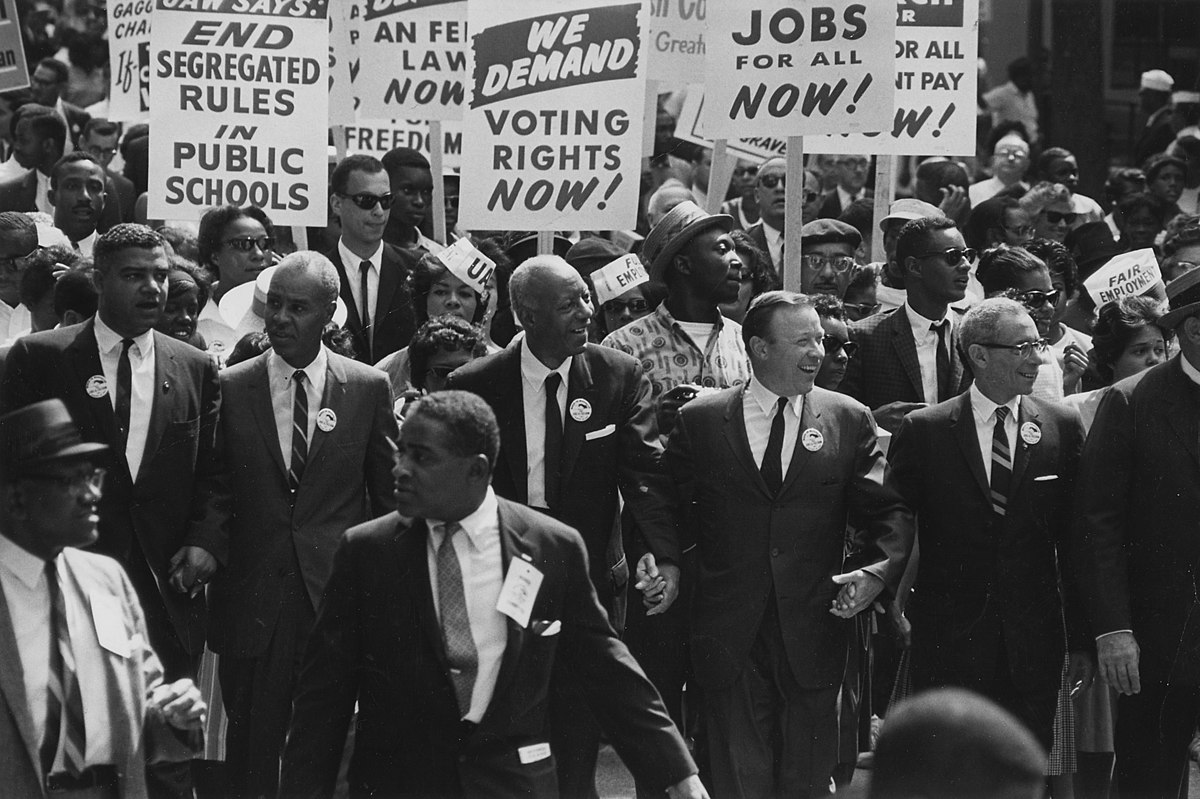
March on Washington for Jobs and Freedom
Washington D.C., DC, USARandolph and Bayard Rustin were the chief planners of the March on Washington for Jobs and Freedom, which they proposed in 1962. In 1963, the Kennedy administration initially opposed the march out of concern it would negatively impact the drive for passage of civil rights legislation. However, Randolph and King were firm that the march would proceed. With the march going forward, the Kennedys decided it was important to work to ensure its success. Concerned about the turnout, President Kennedy enlisted the aid of white church leaders and Walter Reuther, president of the UAW, to help mobilize white supporters for the march.
The march was held on August 28, 1963. Unlike the planned 1941 march, for which Randolph included only black-led organizations in the planning, the 1963 march was a collaborative effort of all of the major civil rights organizations, the more progressive wing of the labor movement, and other liberal organizations. The march had six official goals:
- meaningful civil rights laws
- a massive federal works program
- full and fair employment
- decent housing
- the right to vote
- adequate integrated education.
National media attention also greatly contributed to the march's national exposure and probable impact. In the essay "The March on Washington and Television News," historian William Thomas notes: "Over five hundred cameramen, technicians, and correspondents from the major networks were set to cover the event. More cameras would be set up than had filmed the last presidential inauguration. One camera was positioned high in the Washington Monument, to give dramatic vistas of the marchers". By carrying the organizers' speeches and offering their own commentary, television stations framed the way their local audiences saw and understood the event.
The march was a success, although not without controversy. An estimated 200,000 to 300,000 demonstrators gathered in front of the Lincoln Memorial, where King delivered his famous "I Have a Dream" speech. While many speakers applauded the Kennedy administration for the efforts it had made toward obtaining new, more effective civil rights legislation protecting the right to vote and outlawing segregation, John Lewis of SNCC took the administration to task for not doing more to protect southern blacks and civil rights workers under attack in the Deep South.
After the march, King and other civil rights leaders met with President Kennedy at the White House. While the Kennedy administration appeared sincerely committed to passing the bill, it was not clear that it had enough votes in Congress to do so. However, when President Kennedy was assassinated on November 22, 1963, the new President Lyndon Johnson decided to use his influence in Congress to bring about much of Kennedy's legislative agenda.
